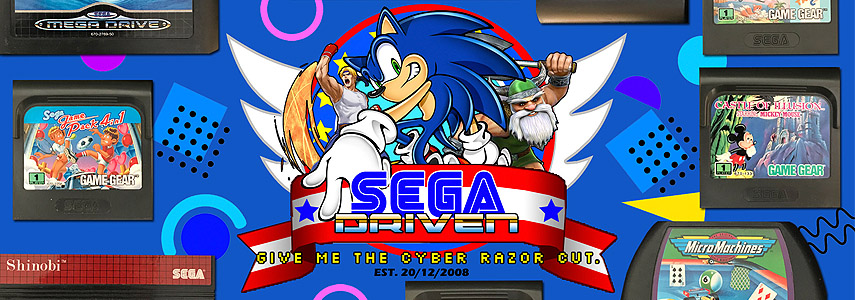Sonic 2 and Sonic CD were developed side-by-side by both the original developers of Sonic 1; Yuji Naka and Naoto Ohshima. While Naka developed Sonic 2 with SEGA’s American division, Oshima stayed in Japan to develop the Mega CD exclusive that is Sonic CD. Therefore both games share similar elements but because of Sonic 2 being developed with the American division it clearly follows a more natural progression for the series that improves on the original game’s strength.
However, Sonic CD is a whole new kettle of fish (and a welcome one at that). What is probably one of the most original titles in Sonic’s library, Sonic CD sees Sonic chasing Dr. Robotnik through the past, present and future of Little Planet; a mysterious planet that only appears at certain times of the year which Dr. Robotnik has chained to planet Mobius in order for it to stop dissappearing and allowing him more time to gather the time stones which will give him the power to control space and time. Now it’s up to Sonic to travel into the past, destroy all Dr. Robotnik’s robot generators and take back the time stones in order to stop Robotnik from wrecking the future.
Sonic CD is a sight to behold. It has all the same vibrant colour and blistering speed you’d expect but with a lot more detail in the games stages, as well as a rather pretty (albeit a little frustrating) special stage which uses the Nintendo developed technique known as Mode 7. Each stage can be played in 4 different times; past, present, bad future or good future. The past stages add a lot more greenery to tile-sets, the bad future litters Robotnik’s ugly machinery everywhere and the good future mixes foliage with technology for the game’s best graphical showcase. As well as being a cosmetic change, playing the game long enough to see all the different varieties adds some clever replay value to the game.
For extra fan service, some very special graphical tweaks make their way into the open. The most obvious one is the beautiful, 45 degree turn Sonic makes in Palmtree Panic act 1 which results in him running up a wall and shooting into the air. It’s a sight every Sonic fan should see.
Not only is the game very pretty, it’s also very fun. Sonic’s speed is as frantic as ever, requiring you to gain some inhuman reaction times. However, the controls and perfectly executed and very responsive making Sonic easy to control even at high speeds. This makes the game’s many platforming sections a lot easier to traverse than some Sonic titles.
And then there’s the soundtrack. The American’s get fobbed off with a terrible, off-beat, poppy-yet-somewhat-creepy soundtrack written by Spencer Nielsen (oh what a pity) but us Europeans and those lovely Japanese get a brilliant, happy, feel-good, let’s-get-naked-and-dance-until-are-legs-fall-off soundtrack that fits the game perfectly. Every tune will stick in your head. It’s a shame this type of soundtrack has never been replicated in more recent Sonic games. I suppose angsty, teenage, power-rock will have to do for the time being.
In my opinion, no other Sonic game has ever matched Sonic CD’s inspired brilliance. Games with time travel features should not be this fun (I’m looking at you Back to the Future). If you haven’t experienced Sonic CD on an original Mega CD with a Mega Drive controller in your hands, you’ll never understand why this spiky, blue fiend was such a pain in Nintendo’s behind. Support the underdog! Support Sonic CD!
